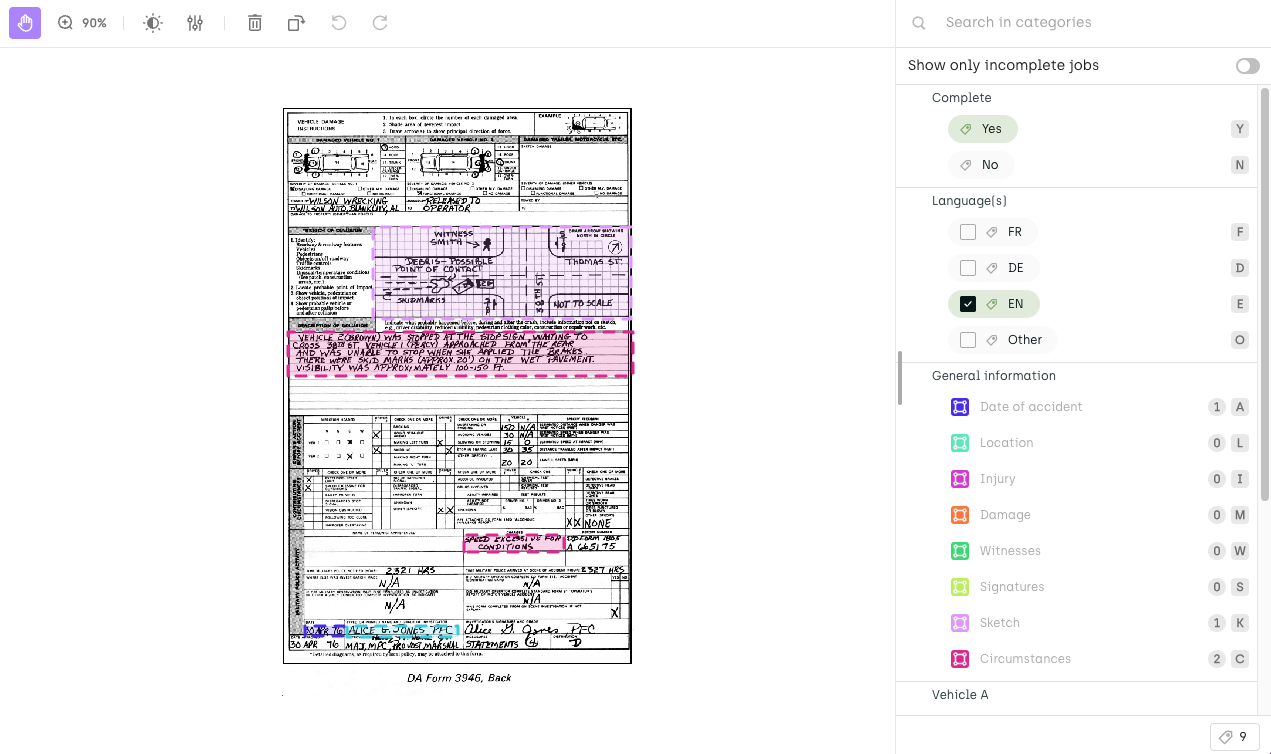Labeling overview
In Kili app, labeling interfaces are composed of two parts:
- Asset viewer (on the left side of the screen)
- Jobs viewer (on the right side of the screen)

Sample labeling interface
Labeling (or annotation) jobs are labeling tasks which are associated with specific tools or input types.
For example, each one of these can be considered a Kili labeling job:
- Classification task with a multi-choice dropdown input type
- Object detection task with the polygon tool
- Named entities recognition task
For more information, refer to Labeling jobs in Kili.
Depending on your project asset type, your interface may contain optional items:
- Input(s)
- Object detection tools
- Additional labeling tools and environment controls (for example, asset magnification and brightness)
- Additional controls for specific interfaces (for example playback speed for video)
Your work done within the last 20 seconds is automatically saved.
The timestamp of the latest change is displayed in the bottom right corner of the labeling interface.Also, the "Autosave" label appears next to the asset name in the project queue.
This means that your work was automatically saved but not yet submitted as a label. Open the asset to resume the work and then submit the label.
For more information on labeling, refer to:
- Adjusting your labeling environment
- Best practices for labeling
- Monitoring current annotation complexity
- Changing and editing existing annotations
- Asking questions
Learn more
Updated about 2 months ago